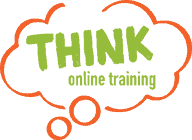Functional Skills Maths Level 1 Guide
Level 1 maths is a government backed course. Accredited by awarding bodies including; AQA, City & Guilds, Edexcel, OCR and Pearson.
The Level 1 Maths course covers three topics: 1) number and the number system, 2) common measures, shape and space and, 3) information and data.
Level 1 Maths – Solving Maths Problems And Decision Making
The learning aims of Functional Skills Maths Level 1 include solving maths problems and decision making. This is to ensure that you’re able to apply your maths skills to real-life situations. During your level 1 maths course you’ll learn the following;
- Read, understand and use mathematical information and mathematical terms used at this level.
- Address individual problems as described above.
- Use knowledge and understanding to a required level of accuracy.
- Analyse and interpret answers in the context of the original problem.
- Check the sense, and reasonableness of answers.
- Present results with appropriate explanation and interpretation demonstrating simple reasoning to support the process and show consistency with the evidence presented.
Level 1 Maths – Using Numbers & The Number System
You’ll learn about whole numbers, fractions, decimals and percentages at level 1 maths. To successfully complete level 1 maths, you’ll need to be able to:
- Count in steps of various sizes, including negative numbers, and understand positive whole numbers up to 1,000,000.
- Order and compare whole numbers of any size, fractions, ratios and decimals.
Recognise the effect of multiplying and dividing by the powers of 10, 100 and 1,000. - Identify, compare and extend a range of numerical and spatial patterns, use, understand and calculate with fractions, decimals and percentages and calculate simple interest.
Numbers And The Number System: What You’ll Learn
The content areas you’ll cover at level 1 maths about numbers and the number system are:
- Read, write, order and compare large numbers (up to one million)
- Recognise and use positive and negative numbers
- Multiply and divide whole numbers and decimals by 10, 100, 1000
- Use multiplication facts and make connections with division facts
- Use simple formulae expressed in words for one or two-step operations
- Calculate the squares of one-digit and two-digit numbers
- Follow the order of precedence of operators
- Read, write, order and compare common fractions and mixed numbers
- Find fractions of whole number quantities or measurements
- Read, write, order and compare decimals up to three decimal places
- Add, subtract, multiply and divide decimals up to two decimal places
- Approximate by rounding to a whole number or to one or two decimal places
- Read, write, order and compare percentages in whole numbers
- Calculate percentages of quantities, including simple percentage increases and decreases by 5% and multiples thereof
- Estimate answers to calculations using fractions and decimals
- Recognise and calculate equivalences between common fractions, percentages and decimals
- Work with simple ratio and direct proportions
Level 1 Maths – Using Common Measures, Shape And Space
You’ll learn the following maths skills when working with measures, shape and space.
- Work out simple relationships between common units of measurement to define quantities, also involving mathematical terms for position and direction
- Apply and use calculations with common measures including money, time, length, weight and capacity
- Visualise, draw and describe 2-D and 3-D shapes and use properties of 2-D shapes in calculations
Using Common Measures, Shape And Space – What You’ll Learn
- Calculate simple interest in multiples of 5% on amounts of money
- Calculate discounts in multiples of 5% on amounts of money
- Convert between units of length, weight, capacity, money and time, in the same system
- Recognise and make use of simple scales on maps and drawings
- Calculate the area and perimeter of simple shapes including those that are made up of a combination of rectangles
- Calculate the volumes of cubes and cuboids
- Draw 2-D shapes and demonstrate an understanding of line symmetry and knowledge of the relative size of angles
- Interpret plans, elevations and nets of simple 3-D shapes
- Use angles when describing position and direction, and measure angles in degrees
Level 1 Maths – Handling Information And Data
You’ll learn about handling information and data at maths level 1. At level 1, you’ll learn how to:
- Select, construct and interpret a range of statistical diagrams in various contexts; select and use methods and forms to present and describe outcomes.
- Extract and interpret information from tables, diagrams, charts and graphs.
- Apply simple statistics and recognise features of charts to summarise and compare sets of data.
- Recognise and use the probability scale and interpret probabilities.
Handling Information And Data – What You’ll Learn
- Represent discrete data in tables, diagrams and charts including pie charts, bar charts and line graphs
- Group discrete data and represent grouped data graphically
- Find the mean and range of a set of quantities
- Understand probability on a scale from 0 (impossible) to 1 (certain) and use probabilities to compare the likelihood of events
- Use equally likely outcomes to find the probabilities of simple events and express them as fractions
